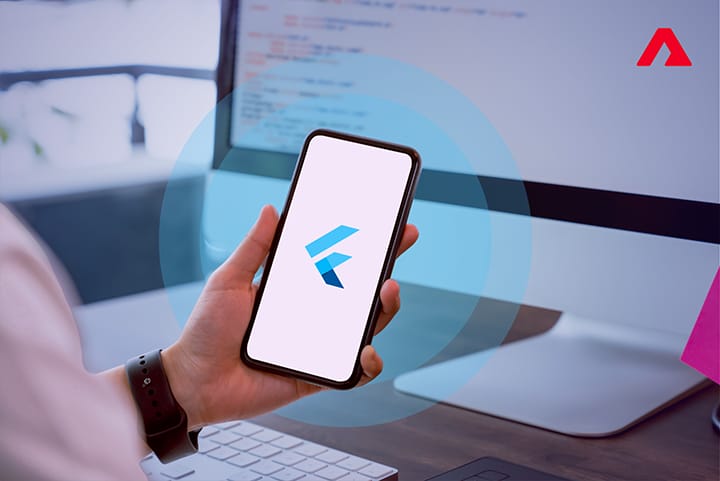In today’s fast-paced digital landscape, businesses must deliver seamless mobile experiences across multiple platforms to stay competitive. With users split almost evenly between Android and iOS, creating apps for both platforms is no longer optional—it’s essential. However, developing separate native apps for Android and iOS can be time-consuming, expensive, and resource-intensive. This is where high-performance Flutter applications come into the picture, delivering a modern, efficient, and cost-effective solution for businesses aiming to engage both Android and iOS users seamlessly.
In this blog, we’ll explore why Flutter is ideal for businesses targeting both Android and iOS apps and how it can drive faster development, improved performance, and higher ROI.
What is Flutter?
Flutter is an open-source UI software development kit (SDK) created by Google. It allows developers to build cross-platform mobile development applications using a single codebase. Instead of writing separate code for Android (Java/Kotlin) and iOS (Swift/Objective-C), Flutter enables you to create apps that run smoothly on both platforms with a unified look and feel.
Key features of Flutter include:
- Single codebase for Android and iOS apps
- Hot reload for real-time UI updates
- Customizable widgets for a consistent and attractive UI
- High performance due to its compiled native code
With these features, Flutter app development eliminates many of the challenges businesses face when trying to develop and maintain multiple apps for different platforms.
Benefits of Flutter for Businesses Targeting Both Platforms
1. Faster Time-to-Market
Time is a critical factor in the business world. Developing separate native apps for Android and iOS can double development time, delaying your product launch. Flutter allows developers to use a single codebase, which significantly reduces the time required to develop, test, and deploy apps across multiple platforms.
This faster development cycle not only saves time but also allows businesses to respond quickly to market demands, release updates faster, and stay ahead of competitors.
2. Cost-Effective Development
Developing two separate apps for Android and iOS can be costly. Flutter reduces development costs by enabling a single team to build apps for both platforms simultaneously. This unified approach decreases expenses related to development, testing, and maintenance.
Moreover, businesses can allocate resources more efficiently, investing saved funds in marketing, customer engagement, or product enhancements.
3. Consistent User Experience Across Platforms
A major challenge for businesses is providing a consistent user experience across Android and iOS. Flutter’s rich set of customizable widgets ensures that the app’s design and functionality remain consistent, regardless of the platform.
Whether it’s typography, animations, or interactive elements, Flutter ensures a seamless user experience, enhancing user satisfaction and building brand trust.
4. High Performance and Smooth Animations
Performance is crucial for user retention. Flutter apps are compiled into native ARM code, ensuring smooth animations and fast load times. Unlike some other cross-platform frameworks that rely on web views, Flutter runs directly on the device, delivering native-like performance.
This high performance is particularly important for businesses in industries like e-commerce, finance, gaming, and healthcare, where app responsiveness directly impacts user engagement and revenue.
5. Hot Reload for Rapid Development
Flutter’s hot reload feature allows developers to see code changes instantly, without restarting the app. This accelerates the development process, enabling quick prototyping, testing, and iteration.
For businesses, this means faster experimentation, quicker bug fixes, and continuous improvements, ensuring that the app evolves in line with user feedback and market trends.
6. Strong Community Support and Backing by Google
Flutter has grown rapidly since its launch and is now supported by a vibrant developer community and backed by Google. This ensures access to regular updates, extensive documentation, and a vast library of plugins, making cross-platform mobile development easier and more efficient.
For businesses, this support reduces the risk of platform obsolescence and ensures long-term sustainability and innovation for their apps.
7. Integration with Existing Code
Flutter allows developers to integrate with existing native apps, making it easier for businesses to enhance or expand their current apps without starting from scratch. This is particularly useful for businesses that want to gradually migrate to a cross-platform mobile development solution or add new features efficiently.
Real-World Examples of Flutter Success
Several globally recognized companies have adopted Flutter to build high-performing cross-platform mobile development apps:
- Alibaba: Uses Flutter to provide a seamless shopping experience across Android and iOS.
- Google Ads: Their app leverages Flutter for smooth functionality and consistent design.
- BMW: Employs Flutter to power their My BMW app, ensuring performance and user experience consistency across devices.
These success stories demonstrate Flutter’s ability to handle complex, business-critical applications efficiently.
Why Flutter is a Strategic Choice for Businesses
For businesses aiming to reach a broad audience on both Android and iOS, Flutter is not just a development tool—it’s a strategic advantage. By enabling faster development, lower costs, high performance, and consistent user experience, Flutter helps companies focus on what matters most: delivering value to their users and achieving business goals.
Furthermore, Flutter’s flexibility and growing ecosystem make it a future-proof choice for businesses planning to scale or explore emerging technologies like augmented reality, AI integrations, or web-based apps.
Conclusion
In an era where mobile apps are central to business growth, choosing the right development framework can make or break your success. Flutter app development stands out as an ideal solution for businesses targeting both Android and iOS apps, offering a perfect blend of speed, efficiency, and performance.
By adopting Flutter, businesses can accelerate time-to-market, reduce costs, provide a consistent user experience, and leverage cutting-edge technology, all while staying competitive in a dynamic digital landscape. Whether you’re a startup aiming to disrupt the market or an established enterprise seeking efficiency, Flutter empowers your business to deliver high-quality, cross-platform mobile development apps without compromise.






